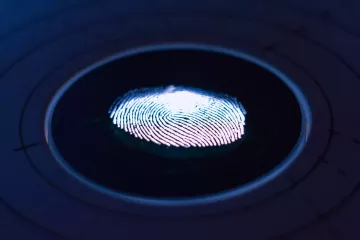ID Tags as a digital DNA of a product: need for authentication still growing
A good is considered counterfeit if it is made and/or sold on behalf of a brand name of a company, without the proper authorization of the brand. These are usually goods of inferior quality, which, in the case of health-related or safety critical products, can put the user in danger.
In this article we try to provide a guideline of the anti-counterfeit solutions that are conventionally available for businesses of all sizes, and more importantly envision the future of the fraud prevention methods that are imperative for the applications that require an unbreakable security from the counterfeiter.
What does counterfeit mean?
Counterfeiting is the act of illegally creating product, document, banknotes or other items to look exactly like genuine ones in order to deceive people. In general, creating fake (counterfeited) items happen at a low cost and these are being sold at a high value in order to make a profit.
Danger of the counterfeit products for the end user: based on the World Health Organization (WHO) reports an estimated number of 1 million people die annually as a result of a counterfeit medication only. Food products present similar danger as well, with an example of the recent salmonella poisoning in the United States, which according to the US Center for Disease Control (CDC) occurs annually, making nearly half a million Americans sick due to contaminated food products.
“When there is a will there is a way”, unfortunately this is true in a negative context as well. A PWC study performed with 1,100 customers has shown that 16 % of them had admitted to sometimes buying fake medicine, and 41 % had admitted to sometimes buying counterfeit clothing, accessories, films and music.
Producing and selling counterfeit items is a rather measurable crime, and there are clear legal actions and incentives put in place to fight it, at the same time, it should be clear that there is a demand for the fake products as well, and notwithstanding the fact that the consumption of counterfeit items, are mostly decriminalized, these still present a danger to health and safety within our societies.Counterfeit in everyday life.
A danger to human life caused by counterfeit products is clear also in the Automotive, Aerospace, Rechargeable Battery, Chemical and Logistics industries. Not only are these industries producing security-sensitive items, but also ones exposed to a lot of fraudulent B2B corporations.
- Automotive: faked brake shoes, brake pads, steering linkages, air filters, spark plugs, wipers, airbags, etc
- Aerospace: the counterfeit product volume is not as high here, however the safety tall is quite noticeable. In this industry the expected retirement of an aircraft is quite extended, however the parts need to be replaced which counterfaitors take an advantage of.
- Battery: a danger of a fake battery is not only not fitting the original device’s operational load, but also it is less likely to be heat-proofed, designed to charge and discharge safely, or in general from materials that ensure proper shelf-life, thus accounting for thermal issues in customer goods especially.
- Cosmetics: fake chemicals, wrong delusions not fitting to the proper scientific research behind the original products that are certified for usage on, i.e. human skin.
- Toys (plastics): Phthalates, in general are the main environmental and a serious human health related issue connected with plastics, and especially illegal quantities are discovered in counterfeit plastic toys, which of course present larger risks on human health.
In general, the harms caused by the IP crime are massive from the economical point of view as well. The companies suffer bad PR connected to their brand, losing enormous amounts of revenues, spending millions in lawsuits (LVMH famously employing 60 lawyers and annually spending $ 17 million on legal fees for anti-counterfeiting) . The fake luxury merchandise reaches as high as 70 % of the total trade in the counterfeit goods. This narrative of getting ahead from fake pharmaceuticals has appeared with the enormous growth and ease in the online trade.
The Organisation for Economic Cooperation and Development and the EUIPO in a 2019 study about trends in illicit trade found that the value of counterfeit goods had reached as high as $509 billion only within the previous 3 years (3.3 % of the global trade).
All these not even counting the issues caused by the above mentioned safety-critical applications as based on the estimated annual amount of $ 125 million is spent on treating injuries caused by counterfeit products, and only in the G20 economies bear economic damages of over $ 18 billion as a result of deaths caused by counterfeit products.

The capacity of a counterfeiter vs the anti-counterfeiting technology of the future
The undermentioned conventionally available technologies that we will go through surely have their unique use cases, and have proven to be useful, some for a few years, some for decades and more. This in fact may be the reason that enabled the counterfeiter to overcome and cheat the conventionally available technologies on behalf of the health and economical security of the end users and the companies.
In the end of the day when the yield of profit margin from counterfeit goods gets as high as 900 %, it is hard to protect the originality of products against organized crime of this sort, so the companies, especially the ones with elevated need for authenticity of their products, may be making a fatal mistake by ignoring this issue.
The success of the PUF systems, for example, proves the need for a unique code, a sort of an ID to be applied to a system, and ensure authentication of it, these however are not cheap, and are adaptable for a framed number of industries(The external evaluation can cause significant disadvantages as it makes the accuracy lawyer, thus the probability of an error – higher. Additionally, the lack of a response disclosed to internal systems, could result in inner secret leakage, thus also decrease in security). It seems that a technology that is contactless, passive, cheap to produce, comes as a plug and play solution AND is not compromised in the security – would be a relevant added value to the advantages provided by the PUF systems.
A technology like this has been productised by RVmagnetics, where a spread of MicroWire sensors are used to create an extremely unique Identification tag. The tag can look differently and be implemented in almost any material without defects or significant addition to size, however, the final solution would need 3 subjects – the Tag, the reader, the software.
RVmagnetics custom-develops the ID tags based on the customers requirements (i.e. integration into a label, banknote, luxury goods, packaging of a medicine, etc). Other possibilities include capturing a binary readout from a product that has only one MicroWire embedded in them. This is a simpler option that can replace multiple marking technologies and identify the product with an inexpensive, yet utterly unique sensor.
This also showcases one of the extra added-values of this technology – the exclusivity factor: as these tags can be customized per solution(the different length chemical composition, diameter, orientation of the sensor adhesively attached or integrated into the product providing it an identifiable unique hardware code), these are not conventionally available in the market, and even if they would be, the signal is a sort of a digital DNA of the product detected by the reader. The ID tags by RVmagnetics are also inexpensive to produce, and once introduced in a production process can add an enormous value with little cost per unit.
Electronic anti-counterfeiting Technologies
- RFID: These are tags that use the radio frequency technology to detect various objects remotely. The tags are electronic and provide basic identity that can be stored on a device and picked up by a reader.
The 3 key elements necessary for RFID technology (no matter the type) are the Tags themselves, the reader and the data processing system. There are different types of RFID technologies available – Active RFID tags, Passive RFID tags, BAP, PUF. The costs may vary based on the diversity of the functions required from an RFID technology.
- Passive RFID tags usually are used for smart labeling, these are enabling some tracking of the goods and are not expensive, however, these are easy to disable by counterfeiters
- Active RFID tags are often used to track a location of an object remotely, these are useful on medium and large sized products, need a reader and a connection to a server. The distance of these are larger compared to the passive ones, and the costs include initial larger investments in hardware as well.
- BAP (battery-assisted passive) RFID tags are made of a small battery that powers a microchip, which enables rewritable or generally larger memory capacities. These can be used to store information from other sensors, making them useful in combined sensing units or “cold chains”. Implementation of these may require significant changes on the production process. The costs of these will require management systems and changes of production process(alongside the other usual costs)
- PUF (physical unclonable function) RFID tags: these contain a unique chip which can be used to ensure authenticity of a product. May require similar changes to the production process as mentioned above
- NFC (Near Field Communication) is a set of communication protocols that enables secure wireless detection. The distance of the detection is less than 10cm. Essentially it is combining RFID technology with a contactless card. These can be implemented in plastic payment cards, or paper labels. The implementation would require changes in the production process, thus initial investments may be high. The NFC technology costs slightly more than a passive RFID tag.
- Electronic Seals: Seals in general are rather intuitive solutions to ensure a simple monitoring of a state of a subject, and an electronic one is supposed to provide an extra layer of e-security. ESeals are built on RFIDs and provide a digital data capture.
- Magnetic Stripes: Rather typically used on ID or financial cards. The data can be accessed by swiping through the card reader.
- Contact Chips: a Microchip embedded into a plastic card that contains data unique for the specific card holder. When the card is inserted into a card reader the data can be read, most usually as the magnetic strips are also used on financial cards.
Marking anti-counterfeiting Technologies
These usually provide less security, however, these are also less expensive, and the main purpose is not to authenticate, but to identify an individual product.The security they provide against faking or counterfeiting presents itself in the form of the technology(i.e chemical characteristics of the ink) or the information contains in the tag (i.e graphic patterns). In some cases, (i.e a barcode) the pattern is the whole technology itself and in other cases – the tag can enable traceability of a product as well.
The more famous marking anti-counterfeit solutions are the ones that can be visually inspected. The types of these technologies are Optical Memory Stripes, Machine- Readable Codes, Unique Identifier Marks, Inks, Copy Detection Patterns, Microtexts, Watermarks, Rainbow Printing, Encrypted Images.
Another honorable mention in the conventional anti-counterfeiting technologies are the Chemical or Physical(biological) technologies such as DNA coding, Chemical Encoding Traces, Surface Fingerprint Analyses, Glue Coding, etc.
The issue of counterfeiting surely cannot be overcome in a heartbeat, this issue expects sustainable, focused efforts by companies with their professional ethics to invest in the best possible anti-counterfeiting measures, from governments and international unions in the forms of quick and effective regulations, by the end users with increased awareness on using the original and detecting the fake. All these however cannot move forward without the necessary research and development activities, which especially due to the COVID-19 pandemic have been recently overlooked.



